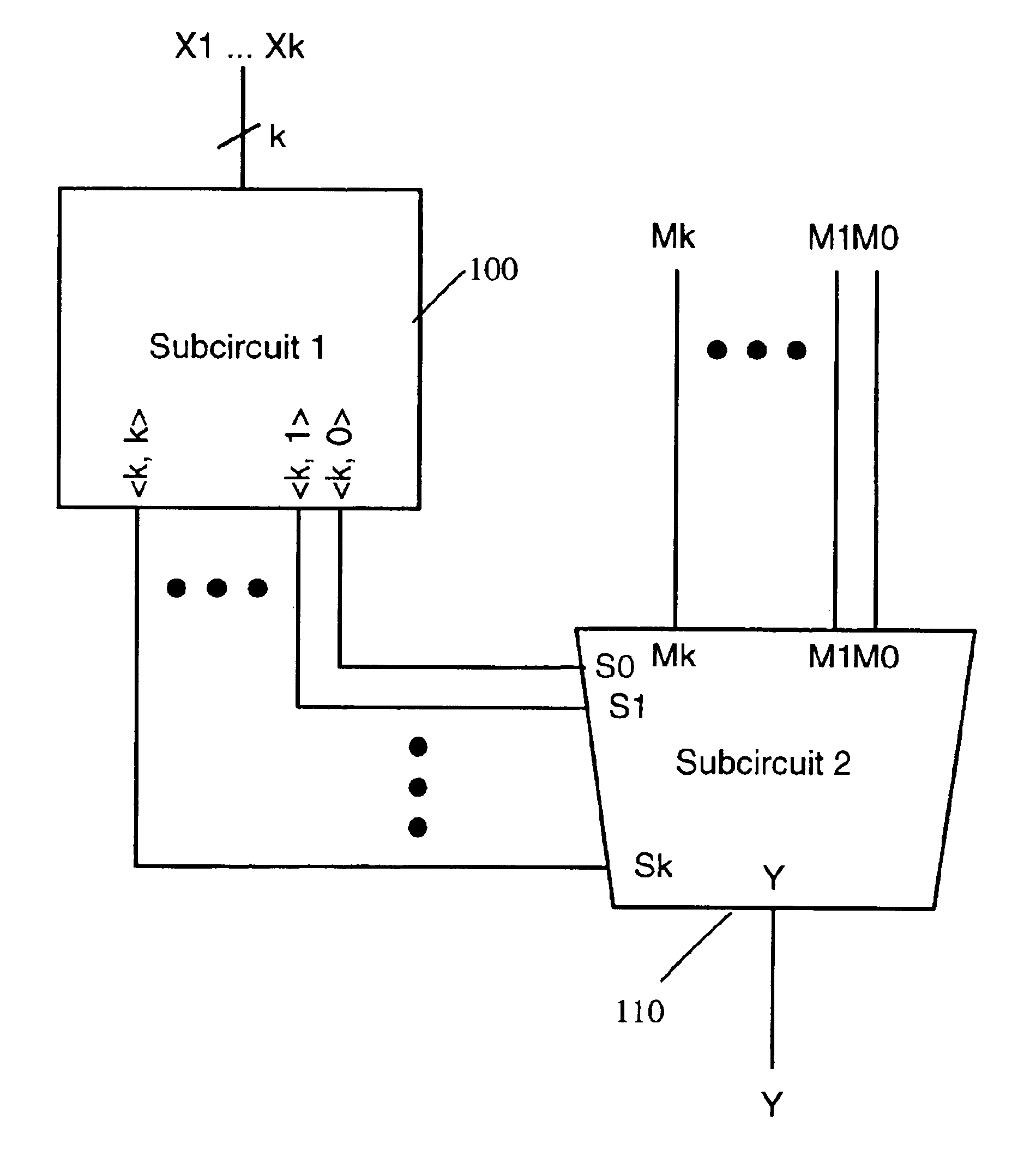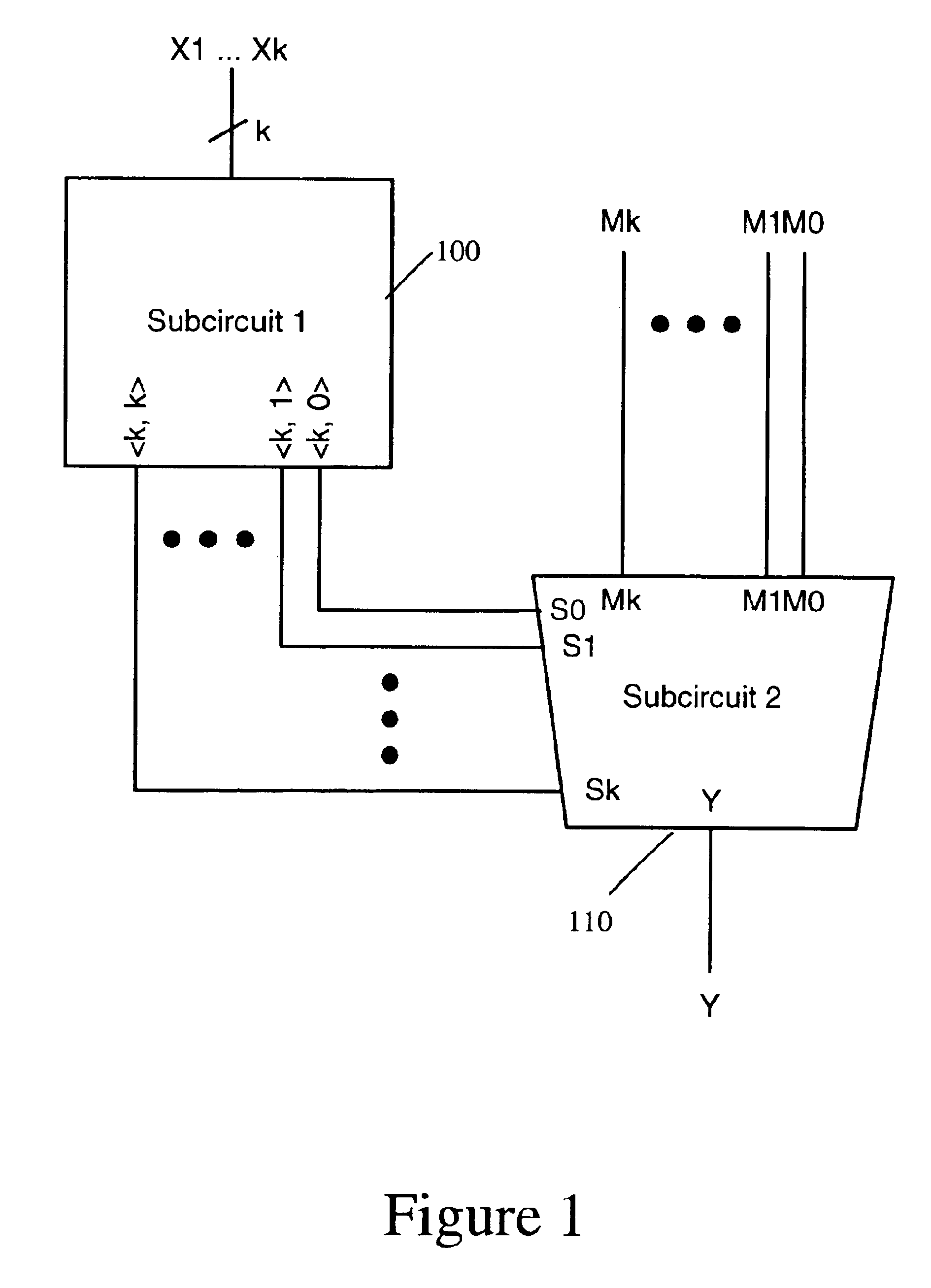Logic circuit
a logic circuit and circuit technology, applied in logic circuits, pulse counters, computation using non-denominational number representations, etc., can solve problems such as large silicon area
- Summary
- Abstract
- Description
- Claims
- Application Information
AI Technical Summary
Benefits of technology
Problems solved by technology
Method used
Image
Examples
first embodiment
[0037]FIG. 1 is a block diagram of a circuit according to the invention.
[0038]The circuit selects one of a plurality of binary inputs M0, . . . ,Mk, depending on the number of highs amongst a further plurality of binary inputs X1, . . . ,Xk. The circuit has two subcircuits: a first subcircuit 100 and a second subcircuit 110.
[0039]The first subcircuit 100 determines the number of highs amongst the further plurality of binary inputs, X1, . . . Xk. There are a total of k binary inputs X1, . . . ,Xk to subcircuit 100. Subcircuit 100 generates k+1 outputs, consisting of a series of selection functions , where j is an integer between 0 and k. Each selection function outputs a high value if there are exactly j high inputs amongst the k inputs to subcircuit 100, and outputs a low value if there are less than or greater than j high inputs amongst the k inputs to subcircuit 100. Each of the selection functions from j=0 to j=k is generated as a separate output signal, giving k+1 output signals...
second embodiment
[0051]FIG. 4 shows a block diagram of a circuit according to the invention. This circuit has k inputs, and generates the selection function 2>, which indicates whether or not exactly two of the k inputs are high. The inputs are divided into two separate groups of inputs, X1, . . . ,Xk1 and Y1, . . . ,Yk2. The first group has k1 inputs, and the second group has k2 inputs, such that the total number of inputs k=k1+k2.
[0052]The circuit of FIG. 4 includes a subcircuit 300, a subcircuit 305, and a subcircuit 310. The subcircuit 300 is similar to the first subcircuit 100 of FIG. 1, but has k1 inputs X1, . . . ,Xk1 and generates k1+1 output signals 1,0> to 1,k1>, each indicating whether or not a particular number of the inputs X1, . . . ,Xk1 are high.
[0053]The subcircuit 305 has k2 inputs Y1, . . . ,Yk2. Subcircuit 305 also generates functions to indicate whether or not a given number of highs are present on the inputs. However, unlike in subcircuit 300, instead of all of the functions 2,0...
PUM
 Login to View More
Login to View More Abstract
Description
Claims
Application Information
 Login to View More
Login to View More - R&D
- Intellectual Property
- Life Sciences
- Materials
- Tech Scout
- Unparalleled Data Quality
- Higher Quality Content
- 60% Fewer Hallucinations
Browse by: Latest US Patents, China's latest patents, Technical Efficacy Thesaurus, Application Domain, Technology Topic, Popular Technical Reports.
© 2025 PatSnap. All rights reserved.Legal|Privacy policy|Modern Slavery Act Transparency Statement|Sitemap|About US| Contact US: help@patsnap.com



